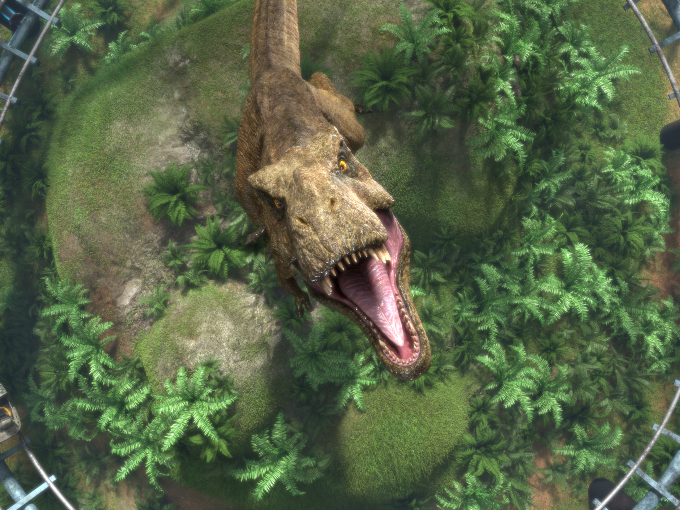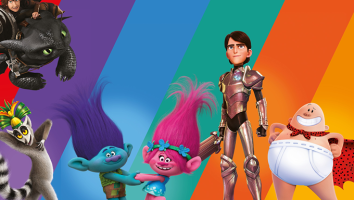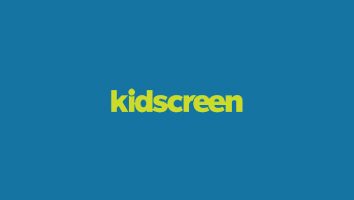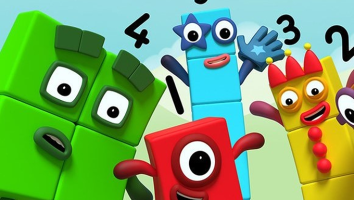Interactive content isn’t new, of course—Black Mirror: Bandersnatch was making headlines five years ago. But interactivity is on the rise in the kids entertainment market, which is looking for ways to tap into the social media hypertrend of kids as creators—and not just consumers—of content.
However, there are two major obstacles standing in the way. The first is a lack of distribution opportunities. For producers, making this type of content is entirely buyer-dependent, and most broadcasters aren’t exactly banging down doors for it. And the second challenge is a lack of accessible and cost-effective production tools.
Interestingly, Netflix seems to have both the desire and the technology to make interactive content for younger audiences. Its proprietary Branch Manager visualization tool helps producers map out and build choose-your-own-adventure-style projects. The streamer has put it to work on kids titles like Netflix Animation’s Battle Kitty (2022) and WildBrain’s Johnny Test’s Ultimate Meatloaf Quest (2021), and it’s gearing up to launch an interactive special called We Lost our Human in 2023. A spokesperson for Netflix says it’s committed to making more interactive series as part of a strategy to build a catalogue of transmedia properties.
Other companies, such as Gamisodes and Hellosaurus, are starting to explore ways to overcome the roadblocks and mine this white space by launching their own apps and streaming platforms. And we’ll touch on those efforts in a little bit. But first, how complicated are interactive series to make? Producers we interviewed say that a 30-minute special typically requires more than triple the volume of content in order to create multiple story paths, but building for interactivity only marginally increases a project’s final budget.
DreamWorks Animation has made several 30- to 40-minute interactive specials for Netflix, starting with Spirit Riding Free: Ride Along Adventure and Puss in Book: Trapped in an Epic Tale. But more recently, the studio has given its most prehistoric IP an interactive twist. Jurassic World: Camp Cretaceous Hidden Adventure (pictured above) is a 32-minute one-off that sees the lead characters from the animated series, stranded on Isla Nublar, embark on a quest to score a stockpile of food. A co-pro with Universal Pictures and Amblin Entertainment, the special launched on Netflix in November 2022. It required the production of close to 70 minutes of content, which was basically equivalent to making three episodes of the Camp Cretaceous series, says executive producer Scott Kreamer.

Jurassic World: Camp Cretaceous Hidden Adventure lets kids make critical narrative decisions that amp up engagement and enthusiasm.
Three directors, three storyboard teams and almost the entire production staff were involved in the project, he adds. And since interactivity was a first for Kreamer and his team, DreamWorks Animation also hired former Netflix interactive executive Julius Harper as a writer and narrative designer to help craft the complicated story.
Despite its challenges, Kreamer says the format was a perfect fit for the IP. The foundation of the Camp Cretaceous brand is kid-led storytelling, unlike the Jurassic Park films, in which the kids are sidelined and need to be rescued by adults. Hidden Adventure takes this aspiration several steps further.
“You hope that when kids watch a regular episode, they’re transported and see themselves in the characters,” says Kreamer. “This is just the next step of that, where kids can be [actual characters], and make decisions and choices.”
DreamWorks Animation’s more traditional interactive series model gamifies the passive experience of watching TV. But some producers are looking to push interactivity even further by putting kids right into the story. Southern California-based techco Gamisodes is launching a platform this year where it will host episodes of licensed shows that feature added moments in which a child’s avatar can be inserted to play a mini-game and keep the story moving.
It’s a twist on the typical franchise model where TV content, gaming and monetization are designed as three separate streams, says Gamisodes CEO Davis Brimer. Companies will typically build out a brand with a linear series before supporting it with a video game and consumer products, but interactive content blends them all together.
On Gamisodes’ free-to-use platform, kids will be able to watch and play episodes and buy things like apparel for their avatar. The company signed its first-ever licensing deal in July, partnering with WildBrain to bring classic animated series Inspector Gadget onto the platform. Gamisodes is currently working on turning the adventure show’s catalogue of episodes into actual “gamisodes” in which moments from the show, such as car and foot chase scenes, become racing games, says Brimer.
It’s similar to what pubcaster PBS KIDS has been experimenting with for the last few years. Working with Boston pubcaster GBH Kids, PBS KIDS launched interactive series Scribbles and Ink in 2019 and Team Hamster! in 2020. Available on the PBS KIDS website and game app, these hybrid experiences play out like normal episodes of a series but then become games where kids must draw (Scribbles and Ink) or move objects (Team Hamster!) to advance the story. In Scribbles and Ink, whatever viewers draw becomes a part of the video, so kids can actually see their doodle of a spaceship fly through a universe they’ve created, for example.
For PBS KIDS, this blend of videos and games is appealing because it provides the rare mix of a tactile experience and lean-back viewing, says VP and GM Sara DeWitt. For many years, the worlds of gaming and content have been very separate, but projects like these are starting to blur the lines. And that’s a good thing.
“Kids get the fun payoff because they can play these games and see their creations becoming part of the characters’ world,” says DeWitt. “Producers also aren’t limited by strict formats or having to decide if something has to be a game or a show, because it can be both.”
These two projects have been a success with kids. Scribbles and Ink has generated more than 21 million page views since it launched in 2019, says DeWitt. And it consistently ranks as one of the top games on the PBS KIDS site, which is especially significant because it’s an original property competing against games for established brands like Wild Kratts and Arthur.
In play testing, kids told PBS that the games make them feel like creators and engineers. Plus, the experience is different for every child every time, since what they add to it is unique to that moment of engagement. DeWitt says her team has more of this content planned.
One of its next experiments will see the pubcaster bring artificial intelligence (AI) to the animated series Elinor Wonders Why. PBS KIDS worked with the University of California Irvine on making an episode of the series using AI to let Elinor pose questions to her kid viewers, listen to their responses, and then answer them.
“Interactive content achieves the goals kids tell us they have for playing with characters, being in the story world, and being creators themselves,” says DeWitt. “It also lets us play with different formats and go beyond the restraints of TV.”
But if you’re not set up the way a pubcaster like PBS is, with supportive partnerships and infrastructure, producing interactive content can be a difficult path to navigate. And that’s where New York-based techco Hellosaurus comes in. The SVOD platform is app-based and uses the organic capabilities of smartphones—and kids’ familiarity with swiping and tapping—to host videos from partners that have included The Wiggles and Super Simple Songs (36 million YouTube subscribers). In fact, its interactive tools are so appealing that the company was acquired in December by edtech specialist Brilliant Worldwide.

The Hellosaurus Creator Studio tool lets producers add interactive features to videos as a cost-effective solution for immersive content.
Hellosaurus CEO James Ruben—who will stay in his role through the acquisition—says he saw white space when he noticed that producers wanted to do interactive content but didn’t know how. To meet this need, Hellosaurus made its proprietary Creator Studio tool available to anyone. Using it, creatives can easily drag-and-drop elements— like a box of crayons kids can draw with—into their videos, which they can then post on their own websites and channels. Creators are able to make an interactive video in a matter of days with the tool, says Ruben. But the goal is to make it even easier.
“We want to democratize the creation of this content,” he explains. “You don’t need to be an engineer to use our tools, and we’re working to make it so producers can make interactive videos in a couple of hours.”
Hellosaurus has around 50 hours of playable content on its platform, and Ruben says he’s seeing consumer demand for it grow, so the company is now expanding to serve audiences beyond its two-to-eight target demo. It’s also moving into making and acquiring more educational content to leverage interactivity as a teaching tool that lets kids learn while playing.
There’s no question that the market for interactive entertainment is growing, but when it comes to scale, there’s a unique challenge ahead for companies in the space. Although connected TVs offer interactivity, it’s not the same as a phone, so a divide between mobile- and TV-focused content models may be brewing.
For now, though, interactive content is definitely on-trend as more and more kids are expecting to be able to interact with their favorite IPs. “We’ve seen that kids prefer the interactive content to the passive versions of the same videos,” says Ruben. “Ideally, interactive experiences will eventually replace passive viewing time altogether.”
This story was originally published in Kidscreen’s February/March 2023 issue.



























